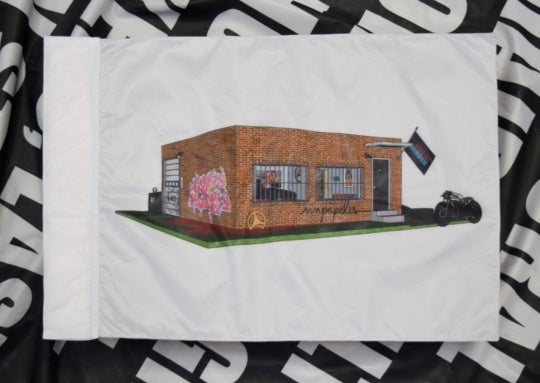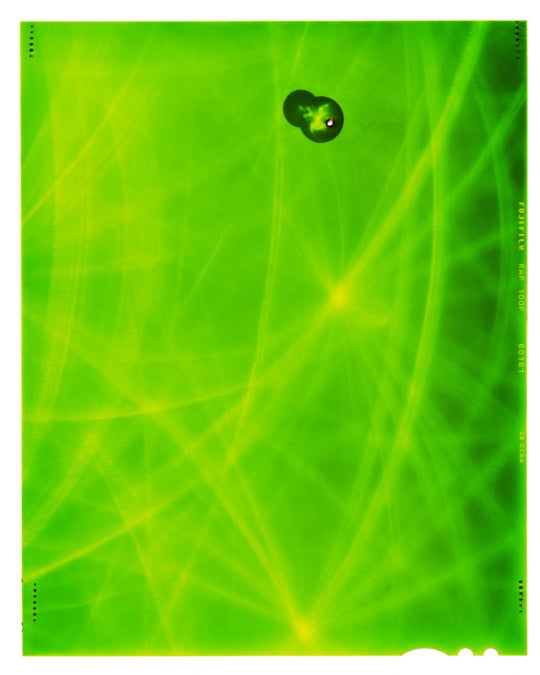
The Stan Lee of the leather boy crowd, artist Tom of Finland crafted remarkable, erotic, outsize images of an almost superhuman gay superhero. With their wasp waists, Vesuvius biceps and supersized packages his strapping, leather-clad characters were smiling, mustachioed ready-for-anything sybarites. They’re the subculture’s answer to the absurd extremes of masculine and feminine in heterosexual pornography, comic books, Jayne Mansfield and Sylvester Stallone, Wonder Woman and
Conan the Barbarian. Tom of Finland’s gay heroes trafficked in the same outsized renditions of masculinity as Marvel icons like Superman and the Incredible Hulk, only with no tragic backstories or flaws, just a rabbitlike readiness to fuck in perpetuity and a joyful certainty in the righteousness of desire.
Finland’s contender for the Academy Awards’ Best Foreign Language Film Tom of Finland, which opens today at the Midtown Art Cinema in Atlanta, is ultimately a traditional, even conventional, bio-pic about a creative evolution, a familiar template of formative moments, blockages to our hero’s goals and then a triumphant realization of his aspirations. Tom was Touko Laaksonen (Pekka Strang, looking like Mads Mikkelsen’s older brother), introduced as a Finnish officer on the battlefield fighting in the Finnish army during World War II. In one of the film’s most shocking juxtapositions, Touko engages in the most testosterone-fueled test of masculine mettle on the battlefield, and then joins a contingent of his fellow soldiers in the forest at night for sex. The war years haunt Touko throughout the film, but especially his killing of a Russian paratrooper, an act that serves as the antithesis of the joyfully hedonistic celebration of youth, virility, life and sex that his black and white drawings would become. That seminal event is relived throughout the film, most poignantly when the mustachioed Russian soldier lives rather than dying, casting an over-the-shoulder smirk at Touko in perfect imitation of a come-hither Tom of Finland drawing.
That all-male military culture and those military uniforms with their broad shoulders, leather boots and amplification of the male form and behavior, director Dome Karukoski suggests, are Touko’s aesthetic and erotic training ground. It’s a motif he continues in his later images of cops and cowboys, leather boys and motorcycle clubbers, a Valhalla of hypermasculinity recast for the endgame of pleasure pursuit. Some credit Tom of Finland with essentially inventing gay leather culture, appropriating the power of cops and soldiers, and rebranding that agency for gay men.

Unlike a conventional biography, however, the obstacles to Touko’s success are a little more tragic and profound because they are universal for gay men, then and now, trying to survivem in a hostile world; the same prejudices that inhibited Touko from showing his work applied to any expression of homosexuality in postwar Europe. That underground gay culture, the film suggests, is both titillation (so much is conveyed with signaling and secret glances, gestures become their own elegant foreplay) and nightmare: Touko’s lover Veli (Lauri Tilkanen) longs for the simple gesture of leaving the curtains open in their apartment when they embrace. The police regularly roust and beat gay men meeting in Helsinki’s public parks, and when Touko’s passport and wallet are stolen by a one-night stand in Berlin, he becomes the criminal, rebuked by a German cop who fondly remembers what the Nazis did to gay men. Even Touko’s artist sister Kaija (Jessica Grabowsky) offers only tongue-clucking disapproval of any expression of his homosexuality, worrying about the shame he will visit on their family name.
As Touko finds his artistic voice in his drawings and love in Veli’s arms, he’s regularly visited by a hypermasculine vision, the ur-leather boy of his graphite dreams, Kake (Swedish figure skater Niklas Hogner) whose randy smile, luxurious, glossy mustache and exploding pecs peeking out from a patent leather jacket make him the ultimate masculine muse, a randy David to Touko’s Michelangelo. When Touko’s growing fan base for his drawings allows him to escape gray, pleasureless Finland for Los Angeles, he discovers a world full of Kakes, a Boogie Nights paradise of short shorts, convertibles, free range carnality and a Hugh Hefner-worthy estate filled with men in leather who worship at the cult of Tom of Finland. Never has the contrast between old world Europe and the pleasure palace of L.A. been so shockingly juxtaposed.
Touko experiences his second creative inhibitor—after finding acceptance and adoration in America—in the HIV crisis for which he feels temporarily indicted, as somehow provoking gay men to the sexual expression that spread the virus. Despite those momentary reservations, the philosophical point of view of Tom of Finland is steadfast. A free and unfettered expression of sexuality practiced by gay men and rendered with the contours of a wished-for carnal paradise of free expression and sexual ecstasy, Tom of Finland’s drawings are an antidote to all of society’s repressions and judgments. For Tom of Finland, sex is freedom and the artist’s empowered gay superheroes perpetually young, never encumbered by performance anxiety or condemnation, frolicking in a dream world expression of a longed-for reality.
“Tom of Finland” opens today, December 8, at Landmark Midtown Art Cinema in Atlanta.
Felicia Feaster is a managing editor at HGTV and Travel Channel, the co-author of Forbidden Fruit: The Golden Age of the Exploitation Film, and writes frequently about art and culture for a number of Atlanta and national publications. She is also a new BURNAWAY board member.




